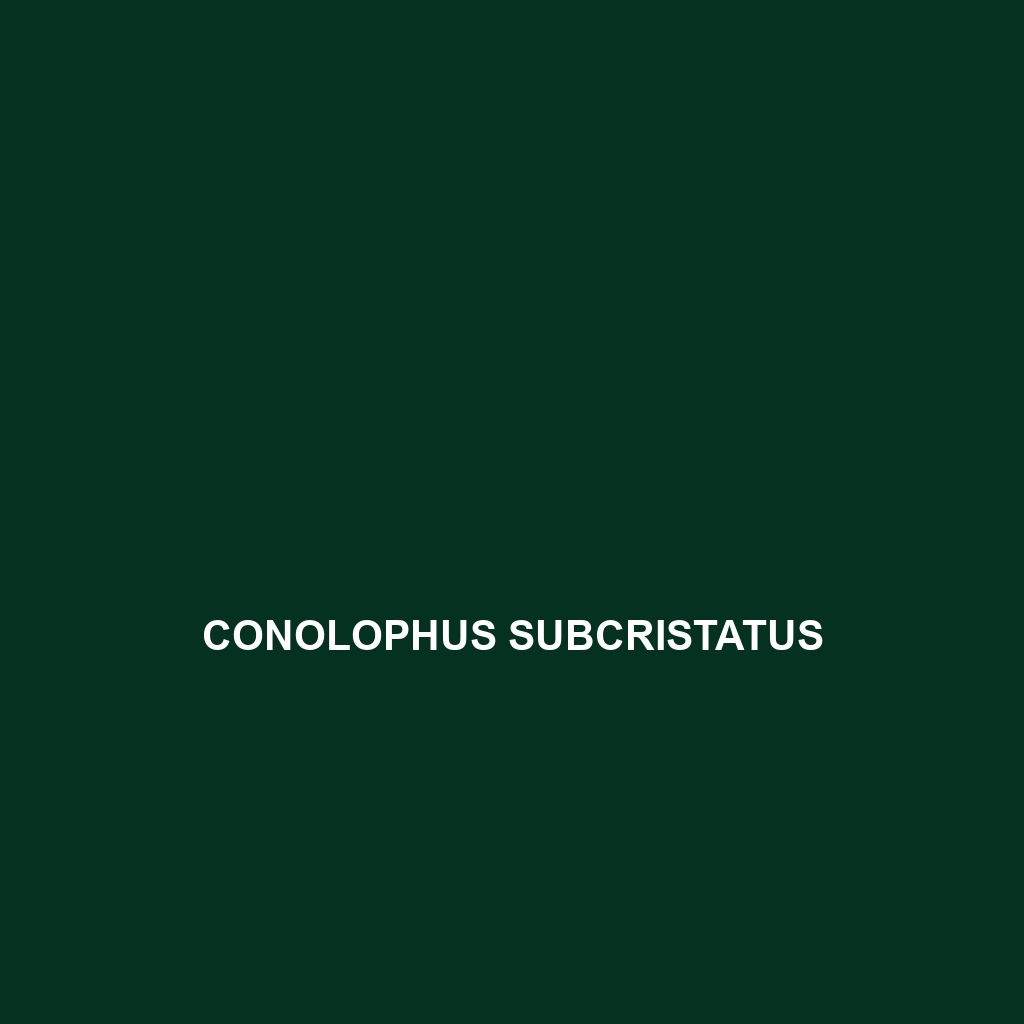Species Description: Conolophus subcristatus
Common Name: Conolophus subcristatus
Scientific Name: Conolophus subcristatus
Habitat
Conolophus subcristatus, commonly known as the Galápagos land iguana, is primarily found on the volcanic islands of the Galápagos archipelago. These iguanas thrive in arid, scrubby environments characterized by sparse vegetation, particularly on the islands of Santa Cruz, Santiago, and South Plaza. They are often seen basking in the sun on rocky terrains and are adapted to thrive in these harsh, dry landscapes.
Physical Characteristics
The Galápagos land iguana can reach lengths of about 1 to 1.5 meters (approximately 3 to 5 feet) and can weigh between 5 and 15 kilograms (11 to 33 pounds). Their bodies are typically robust with a distinctive yellowish to reddish coloration, often depending on their specific habitat. The skin is covered with a layer of scales, providing protection from the rugged environments they inhabit. One prominent feature of Conolophus subcristatus is the spines on their back, which add to their prehistoric appearance and help in temperature regulation.
Behavior
Conolophus subcristatus is primarily diurnal, engaging in activities such as foraging and basking during the day. They are social creatures that often live in groups but will defend their territory, particularly against other males during the breeding season. Their behavior includes burrowing to escape the heat, and they are known to exhibit distinctive courtship rituals involving head-bobbing and tail displays.
Diet
The diet of Conolophus subcristatus is predominantly herbivorous, feeding on a variety of plant materials, including flowers, fruits, and leaves. They particularly enjoy prickly pear cactus pads and other succulent plants, which are vital for their hydration in the arid environment. Their feeding habits play a crucial role in the ecosystem as they aid in seed dispersal and help to maintain the balance of their habitat.
Reproduction
Breeding typically occurs from late January to early March during the wet season. After a gestation period of about 60 days, female iguanas lay between 2 to 25 eggs in sandy nests. The eggs incubate for about 90 days before hatching, usually between December and January. Hatchlings are independent from birth, relying on camouflage to evade predators until they reach maturity.
Conservation Status
The conservation status of Conolophus subcristatus is currently listed as vulnerable by the IUCN (International Union for Conservation of Nature) due to habitat loss and the introduction of invasive species. Conservation efforts are in place to protect their natural habitats and mitigate threats.
Interesting Facts
One fascinating aspect of Conolophus subcristatus is their ability to alter their skin color in response to environmental conditions, a process that helps regulate their body temperature. Additionally, they have adapted behaviors such as burrowing underground to escape the harsh midday sun.
Role in Ecosystem
As a significant herbivore in the Galápagos ecosystem, Conolophus subcristatus plays a vital role in plant management and seed dispersal. Their grazing helps prevent overgrowth of certain plant species, supporting the overall health of their habitat and contributing to the ecosystem’s biodiversity.
